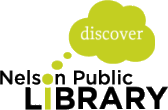Misinformation is false or inaccurate information that is deliberately constructed to mislead the reader/viewer. When misinformation is packaged as a news source, it is called Fake News. This term refers to an Internet source that tricks readers into clicking through a website–an activity called clickbait (these sites are often monetized where each click makes the creator money).
The reader also needs to realize that confirmation bias exists, which basically means that they will process information by looking for, or interpreting, information that is consistent with one’s existing beliefs. So before sharing any information through social media (and tricking friends into clicking on clickbait), make sure that the sources are based on real facts–not fake news. Your library can help!
Credible sources of information
- Find credible information from digital magazines, newspapers, encyclopedias, and other resources available online through the library. Free with your Nelson Public Library card.
- Ask Us! Librarians are trained on how to search for information and how to evaluate it, and we can help you find reliable information. You can also Book-A-Librarian for help with research, or check out our Reference & Research Services!
Education about Misinformation
- Check First. Share After. (MediaSmarts) – Stop the spread of misinformation.
- Get Bad News (online game, ages 14+) – A multiple award-winning fake news intervention aimed at building psychological resistance against online misinformation. The intervention is a theory-driven social impact game, more info here, U. of Cambridge.
- Science Literacy (Coursera & University of Alberta) – Free. By the end of the course, learners will be able to understand and use scientific evidence to challenge claims based on misinformation and engage the process of science to ask questions to build our knowledge.
- Spot Fake News – Don’t believe everything you read. Fake news and disinformation online are serious concerns for Canadians. Watch the video and learn how to SPOT fake news and stop it in its tracks.
Fact-Checking Websites
- FactCheck.Org – A project of the nonpartisan, nonprofit Annenberg Public Policy Center, which monitors the factual accuracy of what is said by major US political players, such as politicians and lobbyists.
- PolitiFact – Staff from the Tampa Bay Times publish original statements by US political players, check their factual accuracy, and assign each a rating ranging from “True” to “Pants on Fire.”
- Media Bias/Fact Check – Includes a searchable database of media sources and articles that are categorized according to bias, from extreme left to extreme right. Note that “bias” is subjective, and not the same thing as “fact.”
- Snopes – An independent website that covers urban legends, modern folklore, internet rumours, and other stories of questionable origin.
- TruthOrFiction.com – Another independent myth-busting website, this one focuses on dubious stories that resurface year after year, instead of “breaking” news and current events.
- Hoaxy – A search engine developed by researchers at Indiana University that visualizes how fake news and other claims spread across social media.
More Guides from Libraries and Literacy Organizations
- Evaluating Information Sources (UBC) – this is for upper-level students when doing research for assignments.
- Fake News: Let’s Check a Claim (Indiana University East) – A university creates a fake website, then shows you how to recognize it’s fake news!
- How to Spot Fake News (International Federation of Library Associations) – provides a downloadable poster or jpg image.
- How to Spot Fake News (Toronto Public Library) – step-by-step how to assess whether an information source is credible, or if there is bias.
- Media Smarts (Canada’s Centre for Digital and Media Literacy) – provides children and youth with critical thinking skills to engage with media as active and informed digital citizens.
